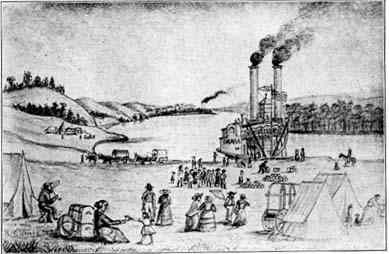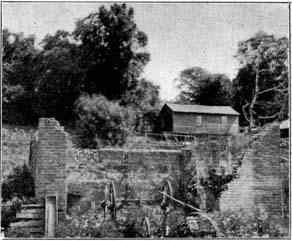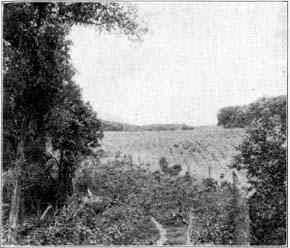|
64
|
SEMI-CENTENNIAL HISTORY OF
NEBRASKA
|
|
ern mind began to attack the gigantic problem of
those days,--a railroad across the mountains and desert
to the Pacific ocean. It provided for the reservation of
a right of way one mile wide from St. Louis to San
Francisco, and that 75% of the proceeds of all land sales
in California and Oregon, and 50% of the proceeds in
other states should constitute a railroad building
fund,--the road to be built by the United States
government. Now begins to appear, in the fierce southern
opposition to Senator Benton's Pacific railroad bill, the
identical opposition which all bills for the orgnaization
(sic) of Nebraska must meet. The next ten years in
congress is one continuous skirmish and battle, plot and
counterplot, between the representatives of the north and
south on the subject of Pacific railroad. At first the
position of the south is against any railroad built by
the government. All the old arguments of the Madison,
Monroe and Jackson vetoes against federal internal
improvements, against the constitutionality of such
measures, are set up in order of battle. When, after a
time, it begins to appear that the Pacific railroad will
be built in the not distant future,--by a clever flank
movement, the fight is shifted to the question, which of
several routes is the best. Then there are surveys and
reports, more surveys and more reports, but the Pacific
railroad bill never gets further in congress than the
stage of debate until after the climax of contention
comes and war between the north and south has taken the
place of debate.
The question of
organizing the territory of Nebraska was therefore
complicated with two other questions,--the opening of a
northern route for the future Pacific railroad and the
crowding of Indian population further south and west to
still farther obstruct white settlement in those regions.
Rival commercial interests north and south, thus become
participants in the struggle which is about to ensue.
Missouri is a slave state, but her people have become the
pioneers of the west; her great city of St. Louis is the
metropolis of the western trade and the interests of her
active ruling class of merchants and politicians are
enlisted in favor of every proposition to develop the
west. Accordingly the next move in behalf of organizing
the new territory originates in Missouri. December 12,
1852, Representative Hall of Missouri introduces a bill
to organize the territory of Platte, which is simply
another name for Nebraska. This bill was referred to the
house committee on territories, of which W. A. Richardson
of Illinois, Senator Douglas' personal friend was
chairman. Congressman Richardson made over Congressman
Hall's bill into a new one which he reported from his
committee February 2, 1853. It proposed to organize the
territory of Nebraska--bound on the south by the line of
36 degrees, 30 minutes, on the north by the present
northern line of Nebraska, on the east by Missouri and
Iowa and on the west by the summit of the Rocky
mountains. Again no mention is made of slavery, but the
provision in former bills that the laws of Iowa should
extend over the new territory until changed by its
legislature is left out. The student feels certain, while
he does not find the proof of his belief in the documents
of the time, that this was done as a concession to
southern votes in Congress which would oppose any effort
to organize territory where free state laws should govern
during the formative period, On February 10, 1853, this
bill reaches the stage of debate in the house. To
appreciate the exquisite irony, the boundless sarcasm, of
this debate,
|






